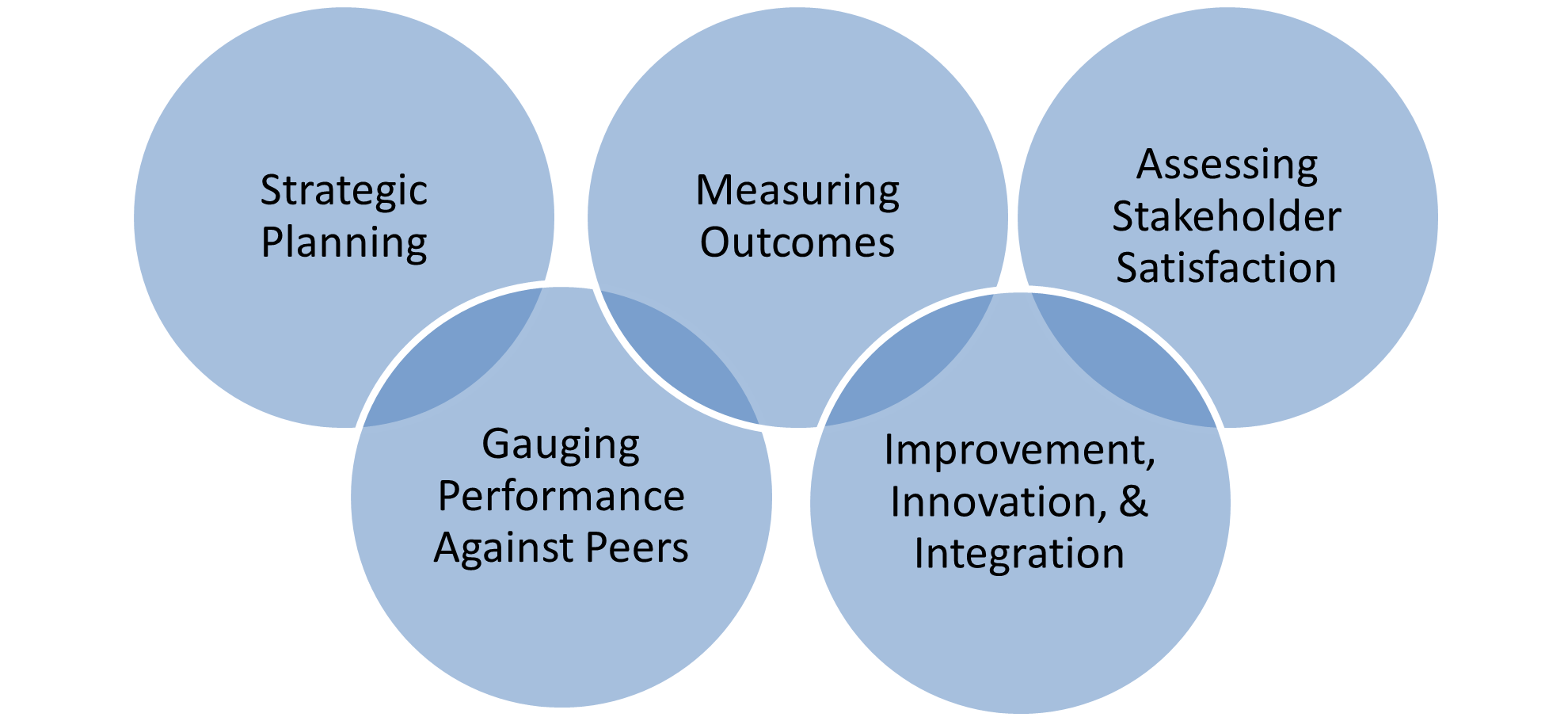
Ohio University
Administrative & Student Support Unit Review (ASSUR)
The purpose of the non-academic program review is to assure that Ohio University’s non-academic support and administrative services – athletic, administrative, and co-curricular units – engage in systematic and integrated planning and continuous improvement by:
- Aligning unit goals and activities with the institution’s mission, vision, and strategic themes
- Stimulating proactive planning and achieving outcomes that support the strategic themes
- Measuring unit outcomes and gauging performance against external peers to demonstrate ongoing service effectiveness and quality
- Ensuring stakeholder satisfaction
- Perpetuating a culture of continuous improvement and organizational innovation
ASSUR Framework

Strategic Planning
Development and/or reaffirmation of unit mission, vision, and strategic goals and outcomes to ensure alignment with OHIO’s mission, vision, and strategic themes. The unit’s key work processes, outputs and outcomes are described in alignment with both the unit’s mission, vision, and strategic goals and OHIO’s mission, vision, strategic themes, and initiatives.
Measuring Outcomes
Crucial to the unit’s overall organization performance is its effectiveness. The unit’s effectiveness represents a measure of the extent to which units or programs achieve their strategic goals and intended outcomes. The unit or program will measure the effectiveness of their key work processes, outputs, and outcomes.
Assessing Stakeholder Satisfaction
Administrative units should monitor their performance in terms of stakeholder expectations. There should be ongoing processes for gathering, interpreting, and implementing stakeholder feedback. These might take the form of surveys, focus groups or other mechanisms where stakeholder feedback is captured. Results of this analysis should be presented and integrated into the priorities and goals of the unit. In addition, a dministrative units should assess workplace satisfaction, its internal organizational climate and support for employees in terms of internal communication, training, development, respect, etc., and identify areas of strengths and potential areas for improvement. Climate should be monitored through surveys such as the Excellence in Higher Education organizational survey or other feedback.
Gauging Performance Against Peers
Administrative and student support units should measure quality in six dimensions: inputs, key work processes, outcomes/outputs. Each unit will develop performance indicators aligned to each dimension and will measure and monitor those performance indicators with comparisons to internal targets and external benchmarks as well as comparing their results over time (longitudinal).
Improvement, Innovation, & Integration
Units will measure their creative process for changing what they do and/or how they do things, e.g., structure, technology, products, services, methods, procedures, policies, etc., to improve performances. Units will describe major changes implemented since the last review and provide an analysis of the link between those changes and the unit’s strategic goals, budgeting, and/or resource allocation and the impact those changes made on specific areas of organizational performance as a measure of an institution’s ability to successfully respond to environmental factors in a timely, appropriate, and results-driven manner.
